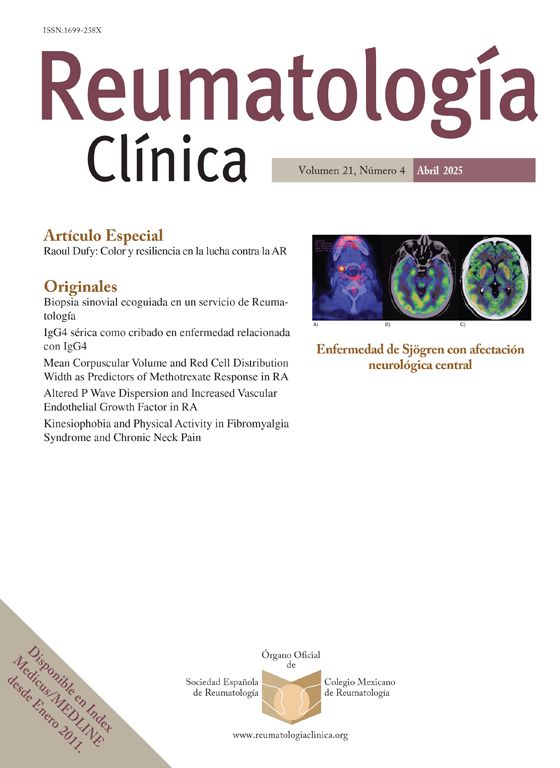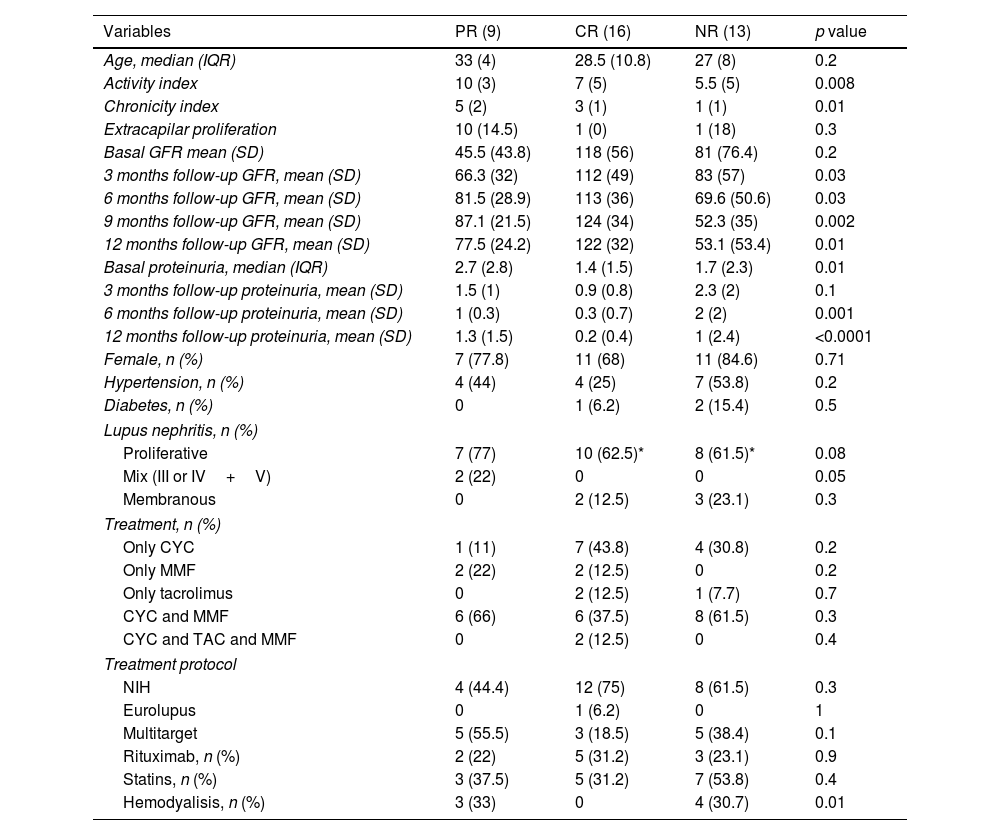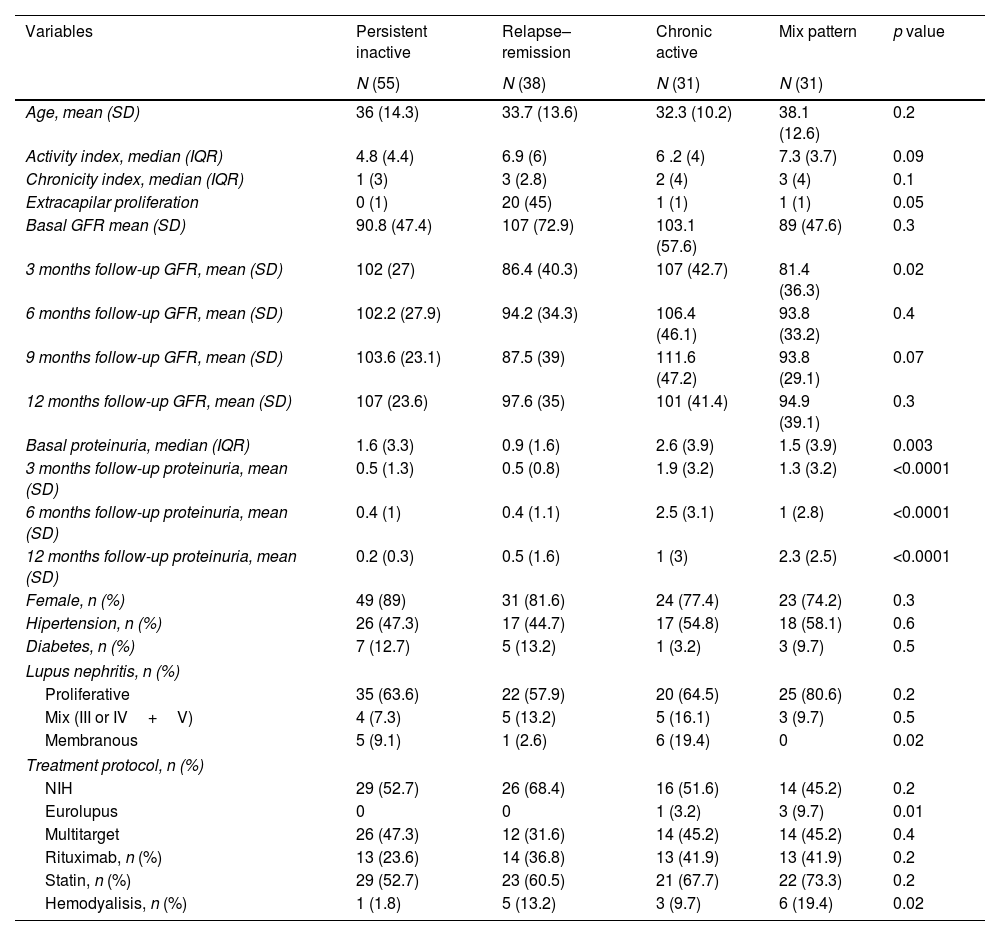lupus nephritis represents a challenge in treatment. In spite of intensive therapy, is common a sustained renal incomplete response.
ObjectiveTo describe different responses to adequate/intensive treatment to lupus nephritis.
MethodsObservational retrospective study, including Mexican>18 years old patients with lupus nephritis who visited tertiary rheumatology centers in several urban cities in Mexico. SLE was diagnosed according to 1997 ACR. The exclusion criteria were follow-up<6 months and reduced GFR due to other comorbidities such as diabetes or other primary renal disease.
ResultsWe included 193 patients with a mean age of 34 years, 80% were women. Biopsy was available in 166 patients (86%): class IV in 42%, class III in 23%, the mean of activity and chronicity index were 6.4 and 2.6 respectively; class V represented 10.2%. The least frequent class was Class II (9%), and mixed classes (III or IV+V) accounted for 11%.
Cyclophosphamide (CYC) was used in 146 patients (76.6%), mycophenolate (MMF) in 144 and tacrolimus (TCR) in 28. In most cases, were used combination therapy.
Only 38 patients had a follow-up of less than 1 year; 16 (42%) had CR, 13 (34%) had NR, and 9 (23%) PR. 55% of patients with PR received a multitarget protocol, 75% of CR received the NIH protocol, and 61.5% of NR the NIH protocol.
Of patients followed up for more than a year (155), 35% had persistently inactive response, 24.5% were relapsing–remitting, 20% were chronically active, and 20% showed a mixed pattern.
ConclusionsPrevalence of persistent or intermittent activity patterns was high (64.5%). Most Mexican rheumatologists switched to more intensive treatment, adding a second or third drug.
la nefritis lúpica representa un gran reto de tratamiento. A pesar de terapia intensa es común la respuesta incompleta.
Objetivodescribir diferentes tipos de respuestas a tratamiento adecuado/intenso para nefritis lúpica, a 1 año y posterior al año de seguimiento.
MétodosEstudio retrospectivo observacional, de pacientes mexicanos>18 años, con nefritis lúpica, atendidos en centros terciarios de atención reumatológica. El diagnóstico de lupus de acuerdo a criterios del ACR 1997. Criterios de exclusión fueron seguimiento<6 meses y daño renal por otras comorbilidades como diabetes u otra enfermedad renal primaria.
Resultadosincluimos 193 pacientes con edad promedio de 34 años, 80% mujeres. La biopsia renal disponible en 166 (86%): clase IV 42%, III 23%, con actividad y cronicidad de 6.4 y 2.6 respectivamente, clase V 10.2% y mixtas 11%; la menos frecuente la clase II en 9%.
Ciclofosfamida se empleó en 146 pacientes (76.6%), micofenolato en 144 y tacrolimus en 28; la mayoría de los pacientes recibieron terapia combinada.
Sólo 38 tuvieron menos de 1 año de seguimiento; 16 (42%) tuvieron remisión completa, 9 (23%) parcial y 13 (34%) sin respuesta. El 75% con RC y 61.5% NR con terapia como protocolo NIH; 55% de aquellos con RP recibieron terapia combinada.
Pacientes seguidos por más de 1 año (155), 35% persistentemente tuvieron respuesta, 24.5% cursaron con remisiones y exacerbaciones, 20% crónicamente activa y 20% patrón mixto.
Conclusionesla prevalencia de actividad persistente o intermitente fue alta (64.5%). La mayoría de los reumatólogos mexicanos decidió terapia más intensa con adición de 2 o más inmunosupresores.









